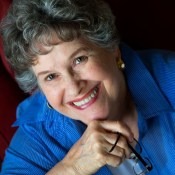
Like many overworked Washingtonians, Jag Bhargava spends about 50 hours a week on the job. As an executive and project director for the General Services Administration, he oversees design, construction, repairs and modernization of the State Department’s buildings, museums, hotels, child care centers and more. He’s also an in-demand speaker.
is among a growing number of people who chose to live at Asbury Methodist Village before they actually retire. He and his wife Sandy have been residents of Asbury’s Courtyard Homes since 2010.
“I’m so glad I moved to Asbury,” says Bhargava, who came from a single-family, large colonial home. “I have more time for spiritual growth, reading, enjoying sports and watching political coverage.” And, he has no worries about mowing grass, raking leaves, waterproofing the deck, shoveling snow and other homeowner headaches that would greet him when the work day ended. “It used to be so hard to come home from work and attend to it all,” adds Bhargava.
He also feels secure in knowing that as he ages and his needs change, his surroundings will adapt. “It’s a great feeling not to worry about being a burden on anyone if I get sick,” says Bhargava. “I am so happy at home and work because I don’t have to worry about the future.”
Whether it’s full-time work, part-time consulting or self-employment, research seems to support that working longer leads to living longer and more of us are doing it.
Phyllis Reynolds Naylor is a Newbury Award-winning author, who has published 150 books for children and young adults, including Shiloh and the Alice series. Naylor’s new book, Roxie and the Hooligans at Buzzard’s Roost and 22 other titles, were written in the home office in her Trott building apartment. (With book number 23 nearly two-thirds complete.)
“I think I’m much more productive here,” says Naylor, who moved in August of 2007. She credits a lot of that productivity to her soundproofed apartment and not having to worry about the demands of home ownership. “If suddenly your refrigerator breaks or your air conditioning stops working, you just make a call and someone comes to fix it.”
She’s also fond of the gym and the indoor walkways, which allow her to exercise at any time of day or night and feel safe doing it. “I write all day and sometimes I need to exercise late at night,” says Naylor. “I’m able to get in all the walking I need.” When she has business meetings with her agent, publisher or other authors, the Blue Note Bistro is her favorite venue. “It’s lively and the food is always good.”
Her life at Asbury is good, too. “I love the grounds. It reminds me of a college campus and since I never had the dorm experience in school, this is sort of my dorm experience, and I of like it!”
Bob Duggan, an executive coach and leadership development trainer, author and co-founder of Resilient Leadership, LLC, chose the Asbury Villas for the peace-of-mind that comes with a CCRC. But he still has a thriving career and thinks Asbury is a great place to base his operations.
He’s also happy not to have to worry about home maintenance and enjoys the financial stability and predictability of Asbury; along with the continuum of health care available if he needs it.
Duggan works 15-to-30 hours a week, mostly from home, which leaves him time to enjoy the range of amenities, the cultural experiences and the wellness and socialization he anticipated when he moved here. “It’s a great community,” he adds.
Realtor Nancy Vert, a resident of the Trott building, not only works full time, she’s a second-generation resident of Asbury. Her parents moved here in 1984 and Nancy made the move in 2003 when her dad started having health issues and needed caregiving.
Working as a real estate agent, Vert has the opportunity to see other retirement communities in the Washington area and says there is a “world of difference between Asbury,” and some of the competition.
“I’m thankful for the support I get here,” says Vert. “Everyone is helpful and friendly and caring — very caring. You don’t find that everywhere.”
Vert’s father passed away a few years back, but her mother, who just celebrated birthday number 106, still lives in her first-floor apartment. And, living at Asbury along with the services it provides, is the reason why Vert is still able to work full time.
From quick turnaround on maintenance issues to the in-house emergency response, “the system here works so well,” says Vert. Add to that no cooking, no yard work and a 24-hour security patrol that makes her feel safe walking her dog at any time.
“Living at Asbury frees me up to do what I need to do to take care of my mom and do my job well,” says Vert. And, she feels strongly that making a move while you’re still working, may actually help you work longer.
Jan and Johanna Sengers, residents of the AMV’s Courtyard Homes since 2011, both work.
Johanna made her career at the National Institute of Standards (NIST) in Gaithersburg. After her retirement in 1996, NIST allowed her to retain her office as a retired scientist emeritus and she has continued working there on ongoing projects a few times a week.
Jan is a professor at the University of Maryland and works 30 hours per week. His philosophy on retirement living is to plan ahead and make the move while you’re still in good shape and can stay active and enjoy all the benefits that come with it.
“Our kids are happier because they don’t have to worry about us,” says Jan. And, the couple has built strong friendships in the community that have enhanced their lives. Jan plans to fully retire in 2020, but until then he plans to stay in the workforce. “Working keeps me on my toes,” he says.